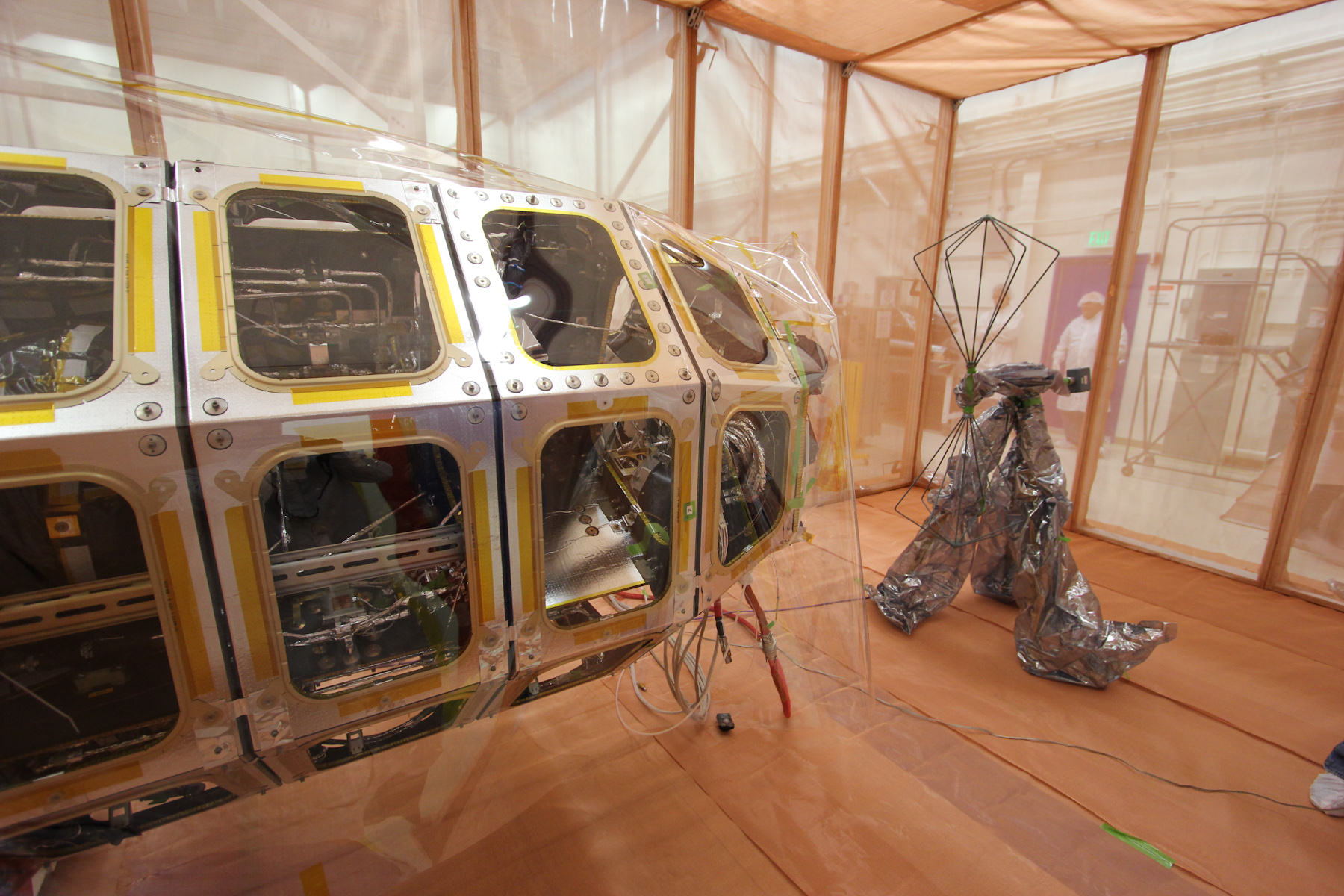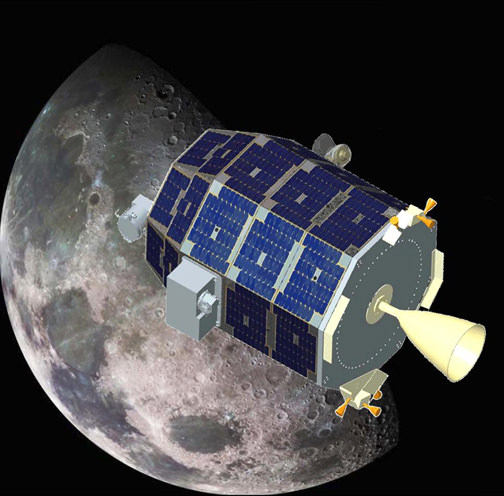NASA’s Lunar Atmosphere and Dust Environment Explorer (LADEE) Observatory sits beside a radio frequency antenna inside an enclosure that blocks external static to detect electromagnetic emissions. Image credit: NASA Ames
With the GRAIL mission ending today, NASA is preparing for its next lunar orbiter mission, which could help pave the way for a potential future human mission to the Moon. While the Moon seems to be an ‘on-again-off-again’ potential human destination, as the GRAIL mission points out, studies of our closest neighbor in space continues to reveal surprises.
But if we are ever going to establish any sort of long-term presence on the Moon, scientists and engineers will have to understand more about the environmental conditions that they’re dealing with. Lunar dust is an environmental factor that requires much more exploration and study, as it may pose one of the biggest problems for humans on the Moon. Lunar dust is as fine as talcum powder and abrasive enough to cause long term problems to the lenses and seals central to the operation of mechanical equipment — not to mention hazards to human health — during any lengthy stay on the Moon.
Artist concept of the LADEE spacecraft in orbit at the Moon. Credit: NASA
To study this unique lunar environmental phenomenon, NASA is in the process of testing the Lunar Atmosphere and Dust Environment Explorer (LADEE) in preparations for its upcoming launch. Recently, LADEE integrated the last of its three main science instruments. The three instruments to be launched with the craft are the Ultraviolet and Visible Light Spectrometer, which will analyze the light signatures of the materials it detects on the Moon, the Neutral Mass Spectrometer, set to detect differences in what little atmosphere there is on the Moon over multiple orbits, and the Lunar Dust Experiment, which will collect and analyze any dust particles that are floating around the sparse atmosphere that LADEE will be flying in.
In addition to it’s science experiments, LADEE will be technically unique in a few ways. First, it is pioneering NASA’s Modular Common Bus architecture, which will hopefully increase the compatibility between future lunar spacecraft’s communications and power systems and thereby decrease their cost.
LADEE will also carry a “technology demonstration payload,” which will allow it to communicate with Earth using lasers rather than radio waves. This will dramatically increase the speed of information transfer between the spacecraft and its controllers, resulting in almost broadband-internet levels of data exchange. If this technology proves successful it is likely to be used on future lunar exploration missions as well.
LADEE is currently undergoing a battery of environmental tests. Acoustic, vibration, shock and thermal-vacuum test still await the spacecraft after it recently passed the electromagnetic interference test. Assuming it manages to keep its clean bill of health, the spacecraft could be launched on it’s 160 day mission as early as August 2013. With its help, humanity will have a better understanding of how to combat one of the most unfriendly aspects of the lunar environment.



I am happy that they are exploring the moon.
We knew more about the other planets but almost nothing about the moon.
“LADEE will also carry a “technology demonstration payload”, which will
allow it to communicate with Earth using lasers rather than radio waves.
This will dramatically increase the speed of information transfer
between the spacecraft and it’s controllers, resulting in almost
broadband-internet levels of data exchange.
As I’ve oft mentioned… I’m all over refurbishing and retasking on-orbit assets. Stuff that’s already up! Key here are low launch costs and lightweight robotics to do modifications to defunct optical spy satellites including: install solar panels, batteries, a laser *.com device, ion engines… “Hey Buddy! Can you spare an old KH-11?”
At first glance, and with a ‘fish eye’ view, that first image appeared to be a habitat with windows! Cupola Mk. II? LOL!
I really hope they do something like what you’re describing (as I also agree that it’s a really good idea). However, I think for this case they’re just trying to speed up the connection between this particular spacecraft and it’s missions controllers. I believe the intent is to vet the technology for use on future missions rather than as a one-off for this specific scientific mission (as most other instruments are).